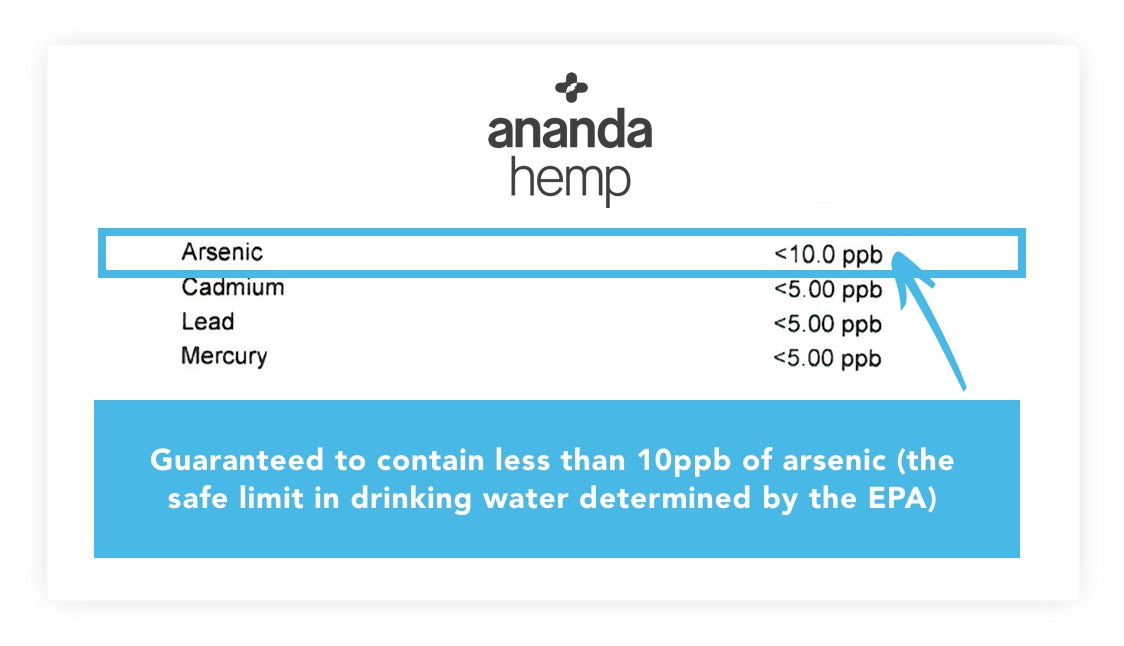The Truth About COA's for CBD
Certificates of Analysis for CBD are vital. We all love a pretty package, but it’s what’s on the inside that really counts. Due to the CBD industry's lack of regulations, asking for proof of quality and safety is a must.
Third-party laboratory testing is a foundational component of any legitimate CBD operation. Sending CBD Oil specimens out to a laboratory with no vested interest in the product allows for an objective analysis of cannabinoid levels, as well as common contaminants like heavy metals, pesticides, microbials, and residual solvents.
A Certificate of Analysis (COA) is a document that shows the results of these laboratory tests. Frequently, COAs aren't easy to get your hands on - you may need to reach out to the company to buy or see it. At Ananda Hemp, we publish up-to-date COAs alongside every SKU, easily accessible on each product page.

Also, every Ananda product comes with a QR code on the back - scan and immediately see the COA for the CBD which you hold in your hands.
One problem - COAs can be challenging to decipher. Here, we will break down each part of our COA and make it quick and easy to understand what you’re seeing.
The COA starts with the name of the lab performing the testing (Eurofins in this case). Checking the laboratory name is very important, as you want to make sure that the CBD manufacturer isn’t testing themselves (conflict of interest). Seeing the date the test was completed is equally essential, as years-old COAs don’t tell you much about products currently for sale.
[Ananda Hemp only uses labs that are ISO certified. Why does this matter? ISO certification certifies that a laboratory has met all the requirements for standardization and quality assurance. ISO (International Organization for Standardization) is an independent, non-governmental, international organization which develops standards to ensure the quality, safety, and efficiency of products, services, and systems.]
‘Sample Name’ shows which product is being tested (600mg full spectrum CBD), while you can cross-reference the lot number with the batch number located on the back of every package of Ananda CBD.

Cannabinoid Profile
The next thing you’ll see on most COAs is a ‘cannabinoid profile’ where you can see which cannabinoids are in the CBD Oil, and in what amounts. Our oil contains CBDV, CBG, CBD, THCV, CBN, CBC, and THC (true full spectrum). CBD is the most prominent cannabinoid in our products, and you can also see that the THC levels are below .3% (the federally mandated legal limit).
While 1.75% CBD may sound like a small amount, keep in mind that for an average cup of coffee, caffeine comprises about 1.1-1.4% of the entire brew.

The following notation states the exact amount of active cannabinoids per milliliter of oil: 21.24mg. Our 600mg CBD Oil is guaranteed to contain at least 20mg of active cannabinoids per 1mL serving - and as you can see here, it’s slightly higher than that.

This point is where many COAs come to an end. You may be surprised to learn how many CBD companies claim that they perform third-party laboratory testing for 'quality and safety' yet don't test for any contaminants.
We test for literally hundreds of contaminants and can proudly say we have the industry's most comprehensive testing profile. Our full COA is nearly two dozen pages long.

Limit of Quantification - What It Is and Why It Matters
Let’s imagine that a CBD manufacturer has gone so far as to perform lab testing for contaminants - there is yet another serious issue we often encounter.
It is crucial to know the ‘LOQ’ or ‘Limit of Quantification’ for any given contaminant. The LOQ essentially tells you the lowest possible amount of that substance that will be tested for.
Take the first compound - Abamectin - and look to the right where it says, “<.10mg/kg.” This means that if Abamectin concentrations exceed .10mg/kg in the oil, it will show up on the test.

If the COA does not state the LOQ, then the results are entirely arbitrary (and meaningless). Take arsenic, for example. The EPA has determined that in drinking water, less than 10ppb is a safe amount to ingest. So as you see on our COA, we test for any arsenic over a 10ppb concentration - guaranteeing that our product is safe from heavy metal toxicity.

Now look at our leading competitor - it merely says ‘pass.’ For all we know, their testing cutoff for arsenic is 10,000ppb; this CBD could be contaminated with heavy metals.

You can see this pattern again in the reports' microbials section, where the lab checks for toxins like mold, Salmonella, and E. Coli. Colony Forming Units (CFUs) are the gold standard for quantifying the presence of microbial contaminants, which is why at Ananda, we guarantee CFU levels below a certain threshold - so you know your CBD oil is clean and safe.

Compare this to our leading competitor's COA, and you can see that in reality, there is no way of knowing how much mold or other microbial contaminants may be in the product (again, due to the arbitrary ‘pass’ terminology). CFUs don’t appear anywhere on the document - a huge red flag.

The Takeaway
Openly listing complete, detailed COAs is the hallmark of an honest CBD company with quality products. Understanding how to read a COA is vital. Many people see any old lab report and check the mental box that the company must be legitimate since they have COAs. Do your due diligence and help the industry as a whole weed out the dishonest companies trying to make a quick buck.
To your health and happiness, always.





